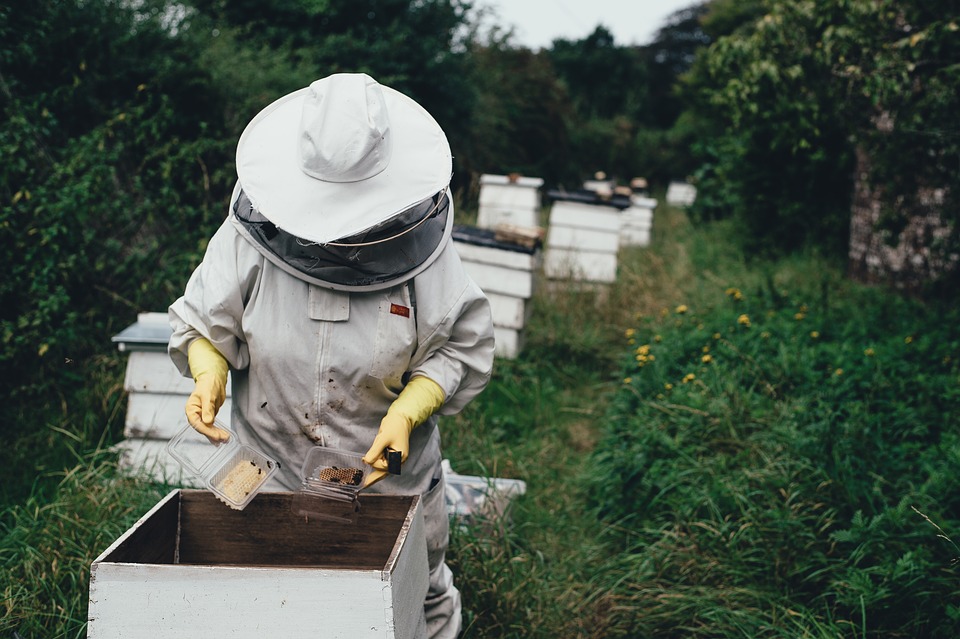 (Beyond Pesticides, October 18, 2019)Â The U.S. Environmental Protection Agency (EPA) issued a directive in September, under Administrator Andrew Wheeler, that changes its pesticide approval process and aims to reduce (mammalian) animal testing significantly by 2035. The agency also announced awards totaling $4.25 million to four universities for development of alternative methods to evaluate chemicals, including pesticides. The move will likely be seen both as an advancement of animal rights, and as a setback for the kinds of testing that can have important implications for human health. Resolution of this issue could be found in a shift away from chemical agriculture and to organic and regenerative practices, which eschew toxic chemicals and synthetic fertilizers, and obviate need for them.
(Beyond Pesticides, October 18, 2019)Â The U.S. Environmental Protection Agency (EPA) issued a directive in September, under Administrator Andrew Wheeler, that changes its pesticide approval process and aims to reduce (mammalian) animal testing significantly by 2035. The agency also announced awards totaling $4.25 million to four universities for development of alternative methods to evaluate chemicals, including pesticides. The move will likely be seen both as an advancement of animal rights, and as a setback for the kinds of testing that can have important implications for human health. Resolution of this issue could be found in a shift away from chemical agriculture and to organic and regenerative practices, which eschew toxic chemicals and synthetic fertilizers, and obviate need for them.
The directive affects not only the agencyâs own research, but also, as the memo says, EPA will âcome as close as possible to excluding from its approval process any reliance on mammal studies conducted after January 1, 2035, including those performed by third parties.â The schools receiving EPA funds to work on alternative testing are Johns Hopkins University, Vanderbilt University and Vanderbiltâs Medical Center, Oregon State University, and the University of California-Riverside.
President of the International Science Consortium for People for the Ethical Treatment of Animals (PETA), Amy Clippinger, PhD commented, âPETA is celebrating the EPAâs decision to protect animals certainly, but also humans and the environment, by switching from cruel and scientifically flawed animal tests in favor of modern, non-animal testing methods.â Those who oppose animal testing comprise some unusual bedfellows: animal rights advocates, such as PETA and the Human Society of the U.S.; the Physicians Committee for Responsible Medicine; small-government activists; and the chemical industry.
Those bedfellows are no doubt pleased with the announcement because, enacted, it would largely eliminate what they regard as inhumane treatment of subject animals. They further argue that animal testing is actually a poor predictor of human health impacts for a variety of reasons, including:
⢠reactions to chemicals vary enormously from species to species
- lab animals are typically psychologically stressed, which can jeopardize the validity of results
- there are other useful ways to test impacts of chemicals exposure, such as through in vitro (conducted in a controlled laboratory setting) and in silico (conducted by computer modeling) experiments
- many animal experiments are fundamentally flawed
Supporters of animal testing for chemicals used in pesticide products maintain that:
- animals provide models of biology and pathology similar enough to those of humans to yield results salient to human health
- there is no adequate alternative to testing on living, whole-body systems
- animal research is highly regulated so as to protect animals from mistreatment
- animals often are better research subjects (than humans, even were it ethical to use people) because of their shorter life cycles
- animals must be used in cases in which ethical considerations prevent the use of human subjects
- alternative methodologies are not meet to the toxicological challenges of the complex dynamics inherent in cancer or reproductive toxicology
Lena Smirnova, PhD of Johns Hopkins Center for Alternatives to Animal Testing notes that animal â and especially rodent â physiology differs in many ways from that of humans, and that, e.g., in one research study comparing human and animal drug toxicities, rodent models correctly predicted human toxicity in only 43% of the cases. She adds, âIf you look at something very complex, like reproductive toxicity or developmental toxicity or carcinogenicity, rats predict mice by around 60%. So why would we expect that it would be better in humans?â Her laboratory at Johns Hopkins is working on microphysiological systems dubbed âmini brainsâ to observe neurotoxic effects, currently for chlorpyrifos and rotenone.
The legitimacy of using of animal subjects in experiments is an ongoing debate in the scientific community. But the EPA announcement may be understood in some quarters as an agency end-run around EPAâs responsibility âto protect human health and the environment.â Administrator Andrew Wheeler, who is a former coal industry lobbyist, has led the Trump administrationâs aggressive campaign to roll back critical environmental regulations.
In this effort, Mr. Wheeler has charged senior EPA leadership with developing a plan that âwill identify tangible steps to ensure that the agency’s regulatory, compliance and enforcement activities, including chemical and pesticide approvals and agency research, remain fully protective of human health and the environment while pursing these reduction goals.â This is a laudable goal whose achievement is, unfortunately, belied by the already-inadequate review of pesticides that occurs under EPA auspices.
An article co-written for Environmental Health News by Laura Vandenberg, PhD, Associate Professor of Environmental Health Sciences at the University of Massachusetts Amherst (UMass Amherst) School of Public Health and Health Sciences, and Thomas Zoeller, PhD, Professor of Biology at UMass Amherst, says squarely: âChemical testing by the EPA and other regulatory agencies must be improvedâ because it is currently inadequate.
Drs. Vandenberg and Zoeller maintain that current testing for chemical safety (which would include pesticides review) does not adequately protect human health. They cite: the record levels of chronic diseases, both in the U.S. and elsewhere; the strong links between exposure to environmental chemicals, and developmental disorders and endocrine disruption; and research evidence showing that chemicals that are approved by EPA are contributing to chronic disease development. Although open to new technologies to reduce use of animal testing, the scientists say that âunless the Agency [EPA] changes the way it evaluates the effects of chemicals on health, a shift away from animal testing will reduce an already inadequate protection for human health.â
The Natural Resources Defense Council (NRDC) has written, âThis is yet another Trump Administration attack on scientific information, this time targeting the laboratory animal tests that show whether and how chemicals may harm people, wildlife, and ecosystems. Instead, the Trump EPA is pushing the use of non-animal alternative methods that are mostly still in development, and cannot capture the complexity of many chemical exposure risks like infertility and cancer.â
NRDC welcomes the development of non-animal test methods that could help identify potential toxicity and adverse effects on humans, wildlife, and the environment. Organization scientists say that âuse of these tests â like any scientific or other toxicity information â can be harmful if used to explain away adverse effects (that is, incorrectly identifying a toxic chemical as harmless). In cases where this happens, harmful chemicals can get into our air, water, cosmetics and personal care products, household items, food and food packaging, etc., threatening the health of humans, pets and wildlife. Thus, if used to permit chemicals onto the market, the regulatory system must use the test information in a health-protective and precautionary manner. That is not the case with the Trump EPA, and it isnât clear when EPA, the FDA or other regulatory agencies will adopt a simple health-protective approach, rather than favoring the chemical industry that it is supposed to regulate.â
Part of criticsâ concern is that the move away from animal testing will fast-track approval of pesticide and other chemical products into the marketplace with inadequate or flawed toxicity testing. Despite some advances in non-animal acute toxicity testing, the arena of chronic and systemic health impacts is more challenging territory for such protocols. Such impacts tend to be more complex disorders â such as reproductive, oncological, and endocrine diseases â whose chemical-exposure catalysts or causes some scientists say are more accurately evaluated via whole-animal testing. In addition, the evaluation of exposure effects and developmental windows in children cannot be evaluated, e.g., in a petri dish. NRDC and other critics say that imposing an artificial deadline, when in vitro and in silico approaches are still nascent, is ill advised, and that funding and animal testing are important to the mission of informing and protecting the public.
NRDC senior scientist Jennifer Sass, PhD, critiqued EPAâs announcement, saying that âEPA is phasing out the tools that lay the groundwork for protecting the public from dangers like formaldehyde and chlorpyrifos, a pesticide used on crops, animals and buildings. The EPAâs plan is a âgiftâ to the chemical industry that will result in a ârigged system that gives the green light to harmful chemicals. Our concern is not with the alternative tests themselves. Our concern is with how EPA is interpreting the data from them. If the tests themselves are not indicating a toxic effect, then EPA is presuming there is no toxic effect.ââ Dr. Sass argues that animal testing works to protect public health, and says that the organization endorses a more-precautionary approach to the use of chemicals that would proscribe approval of any that show evidence of harm in animals.
Drs. Vandenberg and Zoeller point out that EPA could alter its approach to regulating chemicals in order to use these emerging non-animal technologies sensibly: âInstead of requiring overt evidence that a chemical causes harm in animals or people, they could use the results from cell-based tests to identify chemicals that interact with biological systems. Because there would be no information about how these cell-based tests quantitatively relate to humans, they would have to move to a âhazard-basedâ approach.â
The Precautionary Principle, as set out in 1998, says: âWhen an activity raises threats of harm to human health or the environment, precautionary measures should be taken even if some cause and effect relationships are not fully established scientifically. In this context the proponent of an activity, rather than the public, should bear the burden of proof. The process of applying the precautionary principle must be open, informed and democratic and must include potentially affected parties. It must also involve an examination of the full range of alternatives, including no action.â
It is staggering to recognize the reality that our nation and world are saturated with human-made chemicals â 80,000 on the market in the U.S. alone, and most synthesized only in the past 50 years. The majority of those compounds have not been evaluated for effects other than acute toxicity, and 95% have not been reviewed for potential impacts on children. Given these circumstances, Beyond Pesticides advocates for a Precautionary approach to permitting of all pesticides, and for the transition to a world free of them. Join us: https://beyondpesticides.org/join/sign-me-up.
All unattributed positions and opinions in this piece are those of Beyond Pesticides.
Sources: https://www.forbes.com/sites/jennysplitter/2019/10/14/the-epa-is-changing-how-it-tests-agricultural-pesticides/#785bd7d82c14 and https://www.nrdc.org/experts/jennifer-sass/epa-attack-science-targets-critical-animal-tests
 (Beyond Pesticides, October 22, 2019) Last week, legislators in a New Hampshire House subcommittee passed a bill to restrict the use of pesticides implicated in the decline of pollinator populations. HB 646, dubbed the Saving New Hampshireâs Pollinators Act, will now go to executive session on November 7 for final approval prior to a full vote by the New Hampshire House of Representatives.
(Beyond Pesticides, October 22, 2019) Last week, legislators in a New Hampshire House subcommittee passed a bill to restrict the use of pesticides implicated in the decline of pollinator populations. HB 646, dubbed the Saving New Hampshireâs Pollinators Act, will now go to executive session on November 7 for final approval prior to a full vote by the New Hampshire House of Representatives.








 (Beyond Pesticides, October 20, 2019)Â USDAâs National Organic Standards Board (NOSB) should remove nonorganic celery powder from the National List of Allowed and Prohibited Substances for use in organic food production.
(Beyond Pesticides, October 20, 2019)Â USDAâs National Organic Standards Board (NOSB) should remove nonorganic celery powder from the National List of Allowed and Prohibited Substances for use in organic food production. (Beyond Pesticides, October 18, 2019)Â The U.S. Environmental Protection Agency
(Beyond Pesticides, October 18, 2019)Â The U.S. Environmental Protection Agency 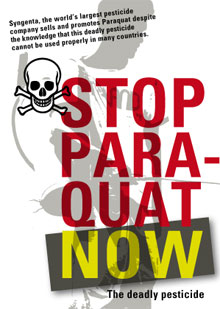 (Beyond Pesticides, October 17, 2019) The U.S. Environmental Protection Agency (EPA) is downplaying the connection between exposure to the herbicide paraquat and the development of Parkinsonâs disease, per
(Beyond Pesticides, October 17, 2019) The U.S. Environmental Protection Agency (EPA) is downplaying the connection between exposure to the herbicide paraquat and the development of Parkinsonâs disease, per  (Beyond Pesticides, October 16, 2019) Organic poultry is far less likely than conventionally raised meats to contain antibiotic-resistant Salmonella, according to
(Beyond Pesticides, October 16, 2019) Organic poultry is far less likely than conventionally raised meats to contain antibiotic-resistant Salmonella, according to 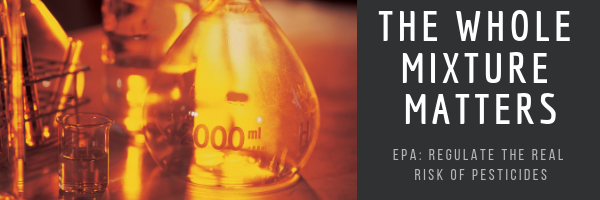 (Beyond Pesticides, October 15, 2019)Â
(Beyond Pesticides, October 15, 2019)Â  (Beyond Pesticides, October 11, 2019)Â
(Beyond Pesticides, October 11, 2019)Â  (Beyond Pesticides, October 10, 2019) Mysterious vaping illnesses across the country could be related to pesticide exposure, among other contaminants in black-market marijuana vaping products. To date, there have been 23 deaths from vaping-related illness, and about 1,100 cases of the illness nationwide. Yesterday, a
(Beyond Pesticides, October 10, 2019) Mysterious vaping illnesses across the country could be related to pesticide exposure, among other contaminants in black-market marijuana vaping products. To date, there have been 23 deaths from vaping-related illness, and about 1,100 cases of the illness nationwide. Yesterday, a  (Beyond Pesticides, October 9, 2019) Pesticide industry propaganda promoting the safety of glyphosate-based herbicides took another hit last month, as a study published by an international team of researchers found the chemical had the potential to induce breast cancer when combined with other risk factors. The study,
(Beyond Pesticides, October 9, 2019) Pesticide industry propaganda promoting the safety of glyphosate-based herbicides took another hit last month, as a study published by an international team of researchers found the chemical had the potential to induce breast cancer when combined with other risk factors. The study,  (Beyond Pesticides, October 8, 2019)Â As medicinal and recreational marijuana continue to be legalized in a growing number of states, concerns about the safety of the burgeoning industryâhow the substance is grown, harvested, processed, distributed, sold, and usedâhave emerged. Pesticides have not been registered for use in cannabis production, yet they are being widely used under state-adopted enforcement levels that imply safety, but not subject to any standard of review that meets pesticide registration standards.
(Beyond Pesticides, October 8, 2019)Â As medicinal and recreational marijuana continue to be legalized in a growing number of states, concerns about the safety of the burgeoning industryâhow the substance is grown, harvested, processed, distributed, sold, and usedâhave emerged. Pesticides have not been registered for use in cannabis production, yet they are being widely used under state-adopted enforcement levels that imply safety, but not subject to any standard of review that meets pesticide registration standards.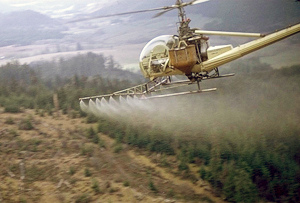 (Beyond Pesticides, October 4, 2019)Â A Circuit Court
(Beyond Pesticides, October 4, 2019)Â A Circuit Court 
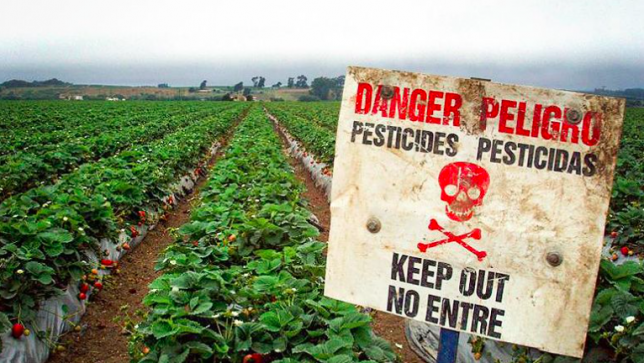 (Beyond Pesticides, October 2, 2019)Â New data gleaned from the Kuakini Honolulu Heart Program â a longitudinal study of men of Japanese descent living on Oahu â
(Beyond Pesticides, October 2, 2019)Â New data gleaned from the Kuakini Honolulu Heart Program â a longitudinal study of men of Japanese descent living on Oahu â  (Beyond Pesticides, October 1, 2019) Commonly used fungicides induce trophic cascades that can lead to the overgrowth of algae, according to research published in the journal
(Beyond Pesticides, October 1, 2019) Commonly used fungicides induce trophic cascades that can lead to the overgrowth of algae, according to research published in the journal 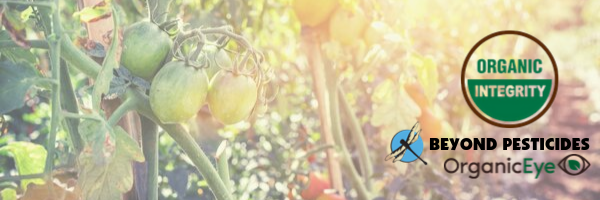 (Beyond Pesticides, September 30, 2019) A warm thank you to all who have sent in comments for the Fall 2019 National Organic Standards Board (NOSB) meeting. We are sending out a second reminder so that those who have not commented can take this opportunity to do so. If you have already submitted, we encourage you to make a second round of comments to make sure your voice is heard!
(Beyond Pesticides, September 30, 2019) A warm thank you to all who have sent in comments for the Fall 2019 National Organic Standards Board (NOSB) meeting. We are sending out a second reminder so that those who have not commented can take this opportunity to do so. If you have already submitted, we encourage you to make a second round of comments to make sure your voice is heard!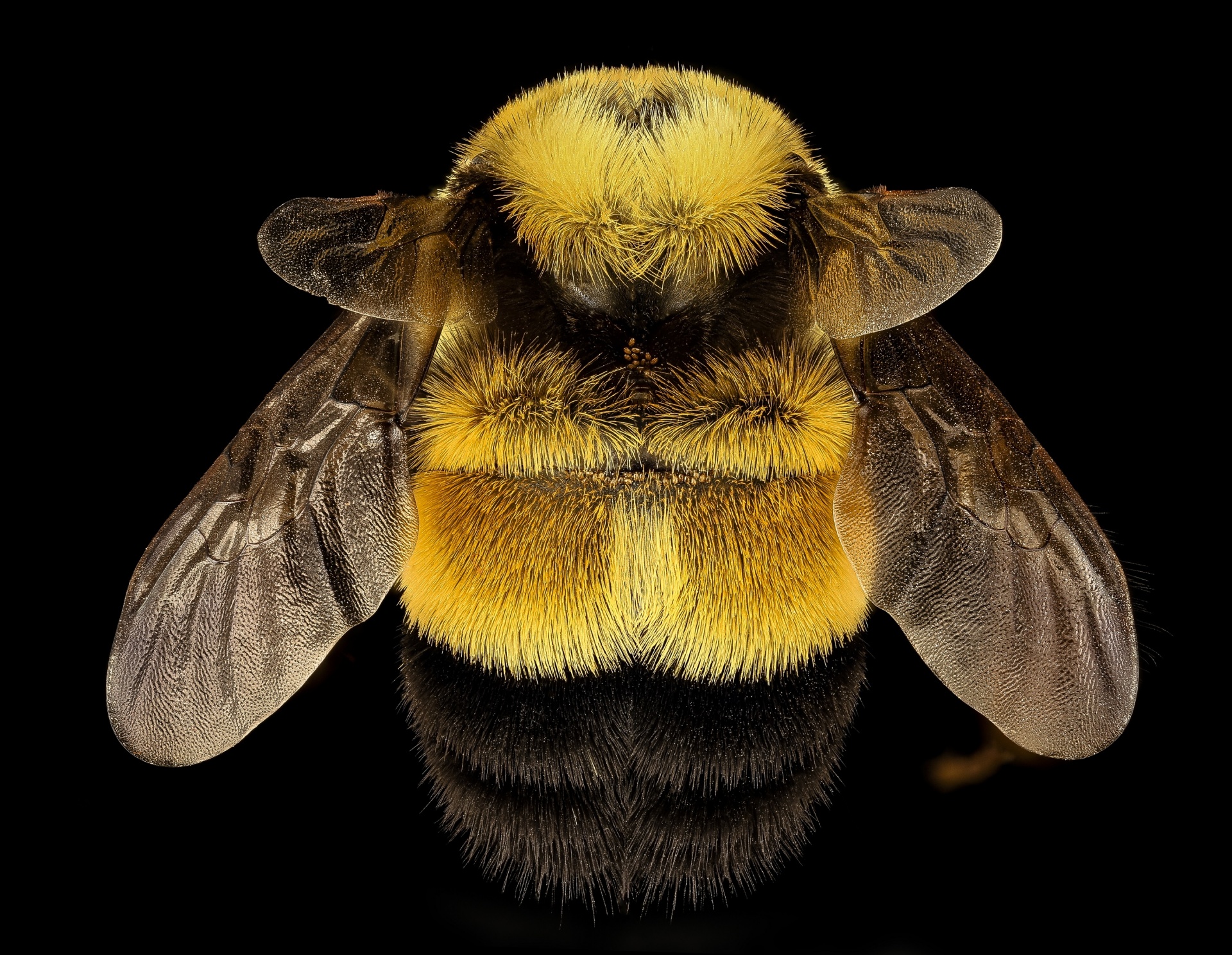 (Beyond Pesticides, September 27, 2019) The U.S. Fish and Wildlife Service (USFWS) will be required to protect the habitat of the
(Beyond Pesticides, September 27, 2019) The U.S. Fish and Wildlife Service (USFWS) will be required to protect the habitat of the 






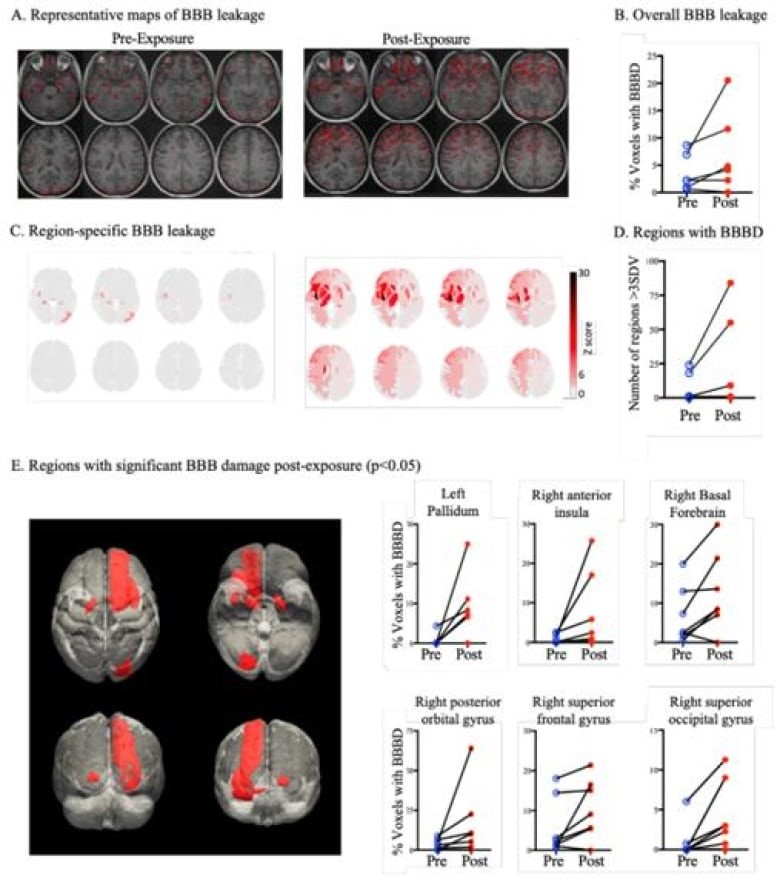
 (Beyond Pesticides, September 24, 2019) âOver increasingly large areas of the United States, spring now comes unheralded by the return of the birds, and the early mornings are strangely silent where once they were filled with the beauty of bird song,â Rachel Carson wrote in Silent Spring in 1962. New research finds that quote has held true since it was written. Over three billion birds, or 29% of 1970s abundance have been lost in North America over the last 50 years.
(Beyond Pesticides, September 24, 2019) âOver increasingly large areas of the United States, spring now comes unheralded by the return of the birds, and the early mornings are strangely silent where once they were filled with the beauty of bird song,â Rachel Carson wrote in Silent Spring in 1962. New research finds that quote has held true since it was written. Over three billion birds, or 29% of 1970s abundance have been lost in North America over the last 50 years.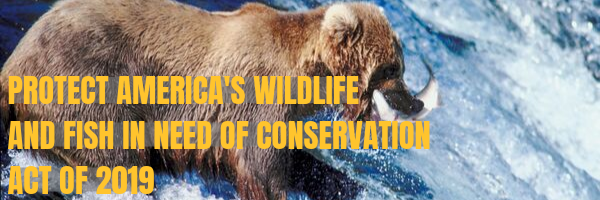 (Beyond Pesticides, September 23, 2019)Â Â Your voice is making a difference! Last month, thousands of individuals took action through Beyond Pesticides and other environmental groups to express concern to their federal lawmakers about the Trump Administration’s assault on the Endangered Species Act (ESA). In response, U.S. Representatives Grijalva, Beyer, and Dingell in the House, and Senator Udall in the Senate have introduced theÂ
(Beyond Pesticides, September 23, 2019)  Your voice is making a difference! Last month, thousands of individuals took action through Beyond Pesticides and other environmental groups to express concern to their federal lawmakers about the Trump Administration’s assault on the Endangered Species Act (ESA). In response, U.S. Representatives Grijalva, Beyer, and Dingell in the House, and Senator Udall in the Senate have introduced the 
